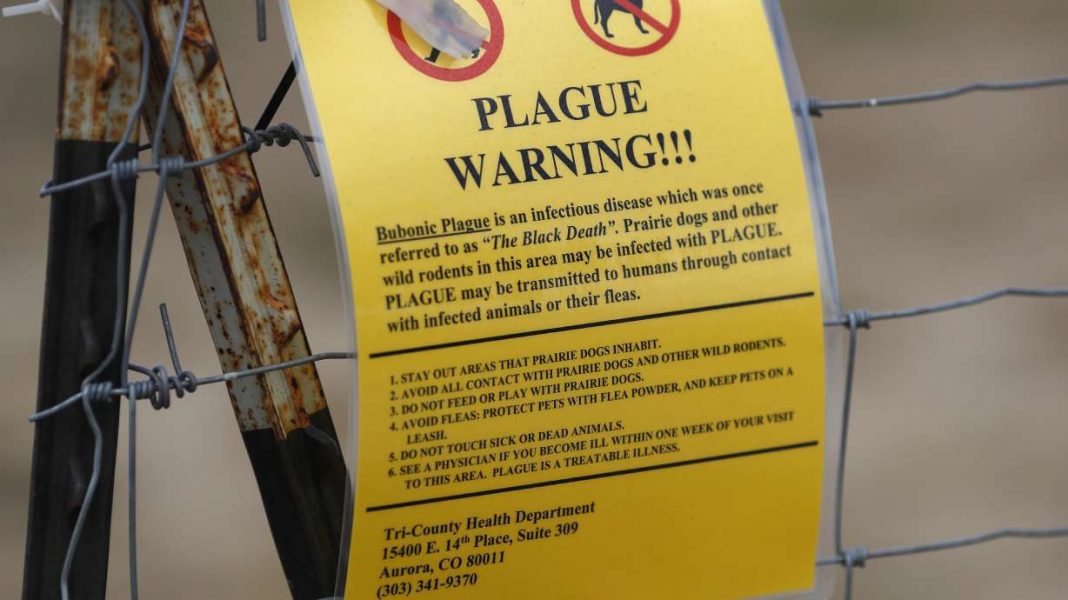SALEM, Ore. — A case of bubonic plague has been reported in central Oregon this week, with the infected individual believed to have contracted the disease from their ill pet cat.
Public health officials have promptly provided medication to the infected individual and their close contacts. The community is not considered to be at risk. Despite receiving treatment, the cat did not survive.
While not common, the plague is not entirely rare in the western United States, with a few cases reported annually. This disease is distinct from Alaskapox, a rare disease that recently claimed a life in Alaska.
Understanding the Bubonic Plague
The plague is an infectious disease that can affect mammals. It is caused by the bacterium Yersinia pestis, which is typically carried by rodents and fleas. According to the U.S. Centers for Disease Control and Prevention, sunlight and drying can kill the plague bacteria on surfaces. Humans and pets suspected of having the plague are usually treated with antibiotics, and occasionally with other medical interventions.
The symptoms of the plague can vary. Bubonic plague, the type contracted by the Oregon resident, occurs when the plague bacteria infects the lymph nodes. This can result in fever, headache, weakness, and painful, swollen lymph nodes. It is usually contracted through the bite of an infected flea, as per the CDC.
Septicemic plague occurs if the bacteria enters the bloodstream. It can develop initially or after bubonic plague goes untreated. This form of the plague can cause fever, chills, weakness, abdominal pain, shock, and sometimes other symptoms like bleeding into the skin and blackened fingers, toes, or the nose. The CDC states that this form can be contracted from flea bites or from handling an infected animal.
Pneumonic plague is the most severe form of the disease, occurring when the bacteria infects the lungs. This form of the plague can cause rapidly developing pneumonia. It is the only form of the plague that can be spread from person to person through the inhalation of infectious droplets.
All forms of the plague can be treated with common antibiotics. Early treatment significantly improves the chances of a full recovery, according to the CDC.
Assessing the Risk of Infection
In the U.S., the CDC reports an average of seven human plague cases each year, with about 80% of these being the bubonic form of the disease. Most of these cases occur in the rural western and southwestern U.S.
In 2012, a welder in central Oregon contracted the disease after removing a rodent from his choking cat’s mouth. He survived but lost his fingertips and toes to the disease. A Colorado teen contracted a fatal case while hunting in 2015, and Colorado officials confirmed at least two cases last year — one of them fatal.
People can reduce the risk of plague by making their homes and outdoor living areas less attractive to rodents. This can be achieved by clearing brush and junk piles and keeping pet food inaccessible. Ground squirrels, chipmunks, and wood rats, along with other rodents, can carry the plague. Therefore, individuals with bird and squirrel feeders should consider the risks if they live in areas with a plague outbreak.
The CDC recommends using repellent with DEET to protect against rodent fleas when camping or working outdoors. Flea control products can help prevent household pets from becoming infected. If a pet falls ill, it should be taken to a vet as soon as possible, as per the CDC’s advice.
The Black Death in the 14th century was perhaps the most infamous plague epidemic, killing up to half of the population as it spread through Europe, the Middle East, and northern Africa. It began devastating communities in the Middle East and Europe between 1347 and 1351, and significant outbreaks continued for roughly the next 400 years.
While the plague remains a serious illness, antibiotics and supportive therapy are effective for even the most dangerous pneumonic form when patients are treated in time, according to the World Health Organization.




Plague is a serious disease that should not be taken lightly. It is crucial for everyone to be educated about its diagnosis and symptoms to protect ourselves and our communities. #UnderstandingThePlague
Disagree